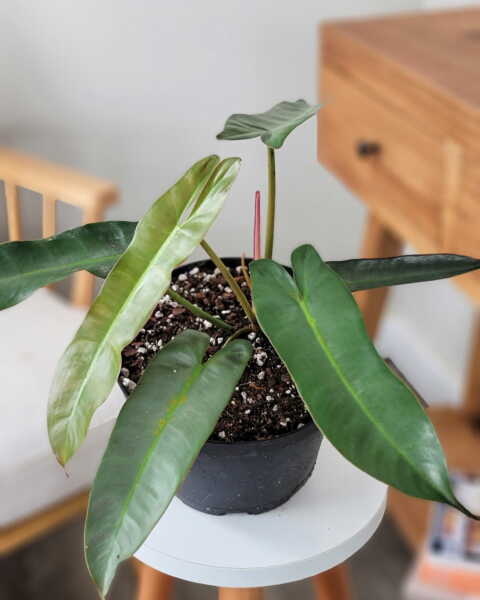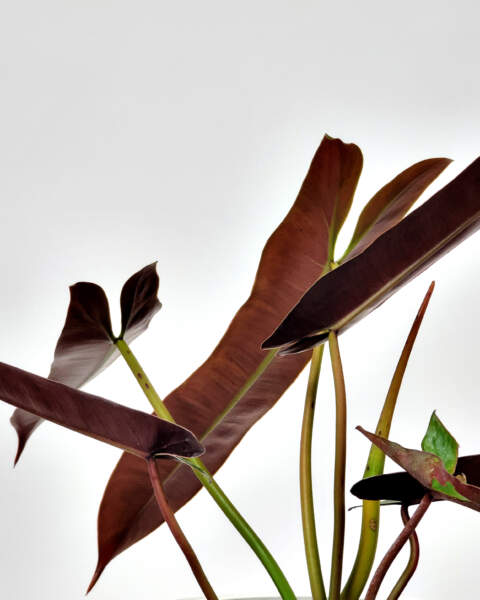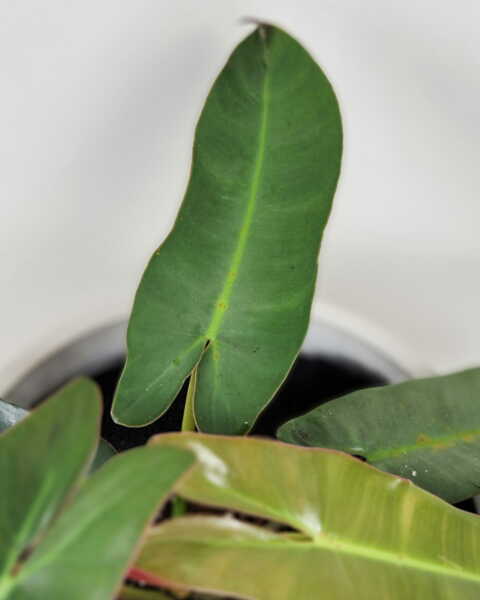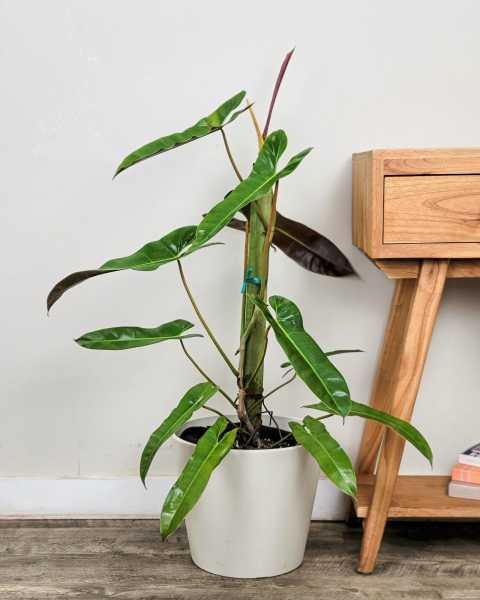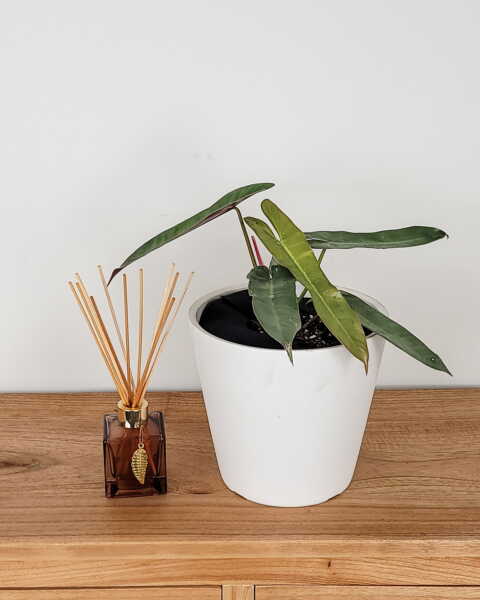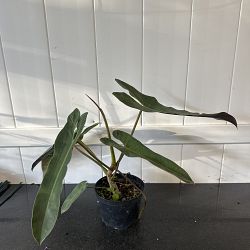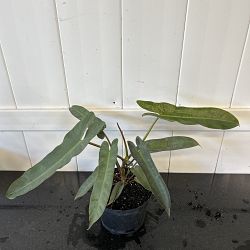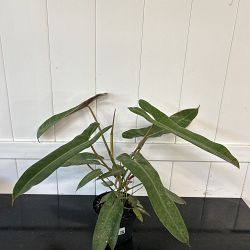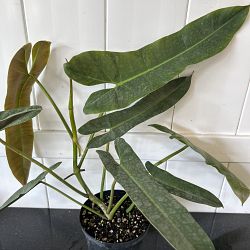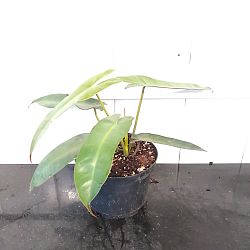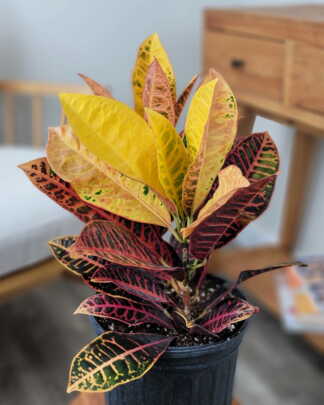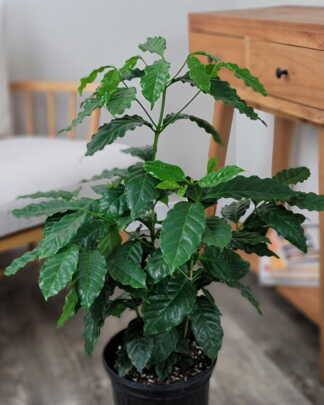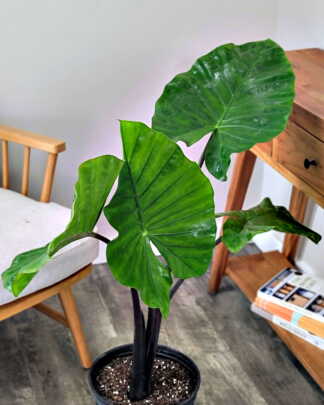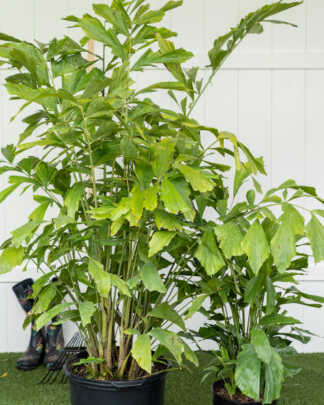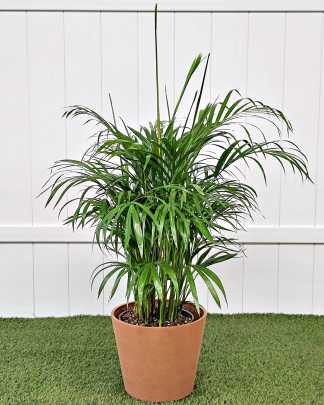Description
Caring for your Philodendron atabapoense
Philodendron atabapoense is a unique and captivating plant that has gained popularity among indoor plant enthusiasts for its stunning, elongated, and bi-colored leaves. Originating from the tropical rainforests of South America, particularly in regions near the Atabapo River in Venezuela, this rare aroid is known for its deep green, velvety upper leaf surface contrasted with a rich maroon underside. While its exotic appearance may suggest otherwise, Philodendron atabapoense is relatively easy to care for, provided it is given the right conditions. This guide will walk you through all the essential care tips to keep your Philodendron atabapoense healthy and thriving.
Light
Philodendron atabapoense thrives in bright, indirect light. In its natural habitat, it grows under the dense canopy of tropical rainforests, where it receives filtered sunlight. Therefore, providing similar lighting conditions indoors will help mimic its natural environment. Place your plant near a north or east-facing window where it can receive several hours of bright, indirect light daily.
Avoid direct sunlight, as it can scorch the leaves, causing them to lose their vibrant color and develop brown patches. If natural light is limited, consider using a grow light to supplement the lighting needs. A full-spectrum LED grow light positioned a few feet away can help your plant grow healthy and strong.
Water
Watering is a crucial aspect of Philodendron atabapoense care. This plant prefers consistently moist soil, but it is essential to avoid overwatering, which can lead to root rot. Water your plant when the top 1-2 inches of soil feel dry to the touch. A good rule of thumb is to water thoroughly until water drains out from the bottom of the pot, ensuring that excess water is not left sitting in the saucer.
During the growing season (spring and summer), your Philodendron atabapoense may need watering more frequently, roughly once a week. In the cooler months (fall and winter), reduce watering to once every two to three weeks, as the plant’s growth slows down. Always check the soil moisture level before watering to prevent overwatering.
Humidity is another crucial factor for the health of Philodendron atabapoense. It prefers high humidity levels, ideally between 60% and 80%. If you live in a dry climate or your indoor environment has low humidity, consider using a humidifier to maintain optimal levels. Alternatively, placing a pebble tray with water under the plant or misting the leaves regularly can help increase humidity around the plant.
Soil
A well-draining, airy potting mix is essential for Philodendron atabapoense to prevent waterlogged soil, which can cause root rot. A mix that mimics its natural rainforest floor environment is ideal. A suitable mix can be made using equal parts of high-quality potting soil, orchid bark, and perlite. Adding a handful of sphagnum moss or coco coir can help retain moisture without making the soil too compact.
This mix ensures that water drains well while providing the necessary aeration for the roots. Repotting should be done every 1-2 years or when you notice that the roots are starting to outgrow the current pot. Choose a pot with drainage holes to prevent water accumulation and root rot.
Temperature
Philodendron atabapoense thrives in warm, humid conditions, typical of its tropical origins. The ideal temperature range for this plant is between 65°F and 80°F (18°C to 27°C). It is sensitive to cold drafts and temperatures below 55°F (13°C), which can cause stunted growth and leaf damage. Keep your plant away from cold windows, air conditioners, and heating vents.
Fertilization
Philodendron atabapoense benefits from regular feeding during the growing season to encourage healthy growth and vibrant foliage. A balanced, water-soluble fertilizer with equal parts nitrogen, phosphorus, and potassium (NPK 10-10-10 or 20-20-20) is ideal. Fertilize your plant every 4-6 weeks during the spring and summer months.
Be sure to dilute the fertilizer to half the recommended strength to avoid over-fertilizing, which can cause root burn and leaf discoloration. In the fall and winter, reduce feeding to once every 2-3 months or stop entirely, as the plant’s growth naturally slows down during these cooler months.
Pruning
Philodendron atabapoense requires minimal pruning, but regular maintenance helps keep it looking its best. Prune away any yellowing, damaged, or dead leaves to encourage new growth and prevent the spread of any potential disease. This plant is a climber and will benefit from a moss pole or a trellis to support its upward growth. As it grows, gently tie the stems to the support structure, encouraging the aerial roots to attach.
Pruning is best done in the spring or early summer when the plant is actively growing. Always use clean, sterilized pruning shears to prevent the spread of diseases. Wipe the leaves with a damp cloth periodically to remove dust and allow for better photosynthesis.
Pest and Disease Management
Like many houseplants, Philodendron atabapoense can be susceptible to pests such as spider mites, aphids, mealybugs, and scale. Regularly inspect your plant for any signs of pests, such as discolored leaves, webbing, or sticky residue. If you notice pests, treat them promptly with insecticidal soap, neem oil, or a diluted rubbing alcohol solution.
Root rot is another common issue caused by overwatering or poor drainage. Ensure the plant is in well-draining soil and a pot with drainage holes. If root rot is suspected, remove the affected parts of the root system and repot the plant in fresh soil.
Propagation
Philodendron atabapoense is relatively easy to propagate through stem cuttings. Choose a healthy stem with at least one node and a few leaves. Cut just below the node with a clean, sharp knife or scissors. Place the cutting in water or directly into a well-draining potting mix. If propagating in water, change the water weekly to keep it fresh. Once roots have developed (after about 4-6 weeks), transplant the cutting into soil.

